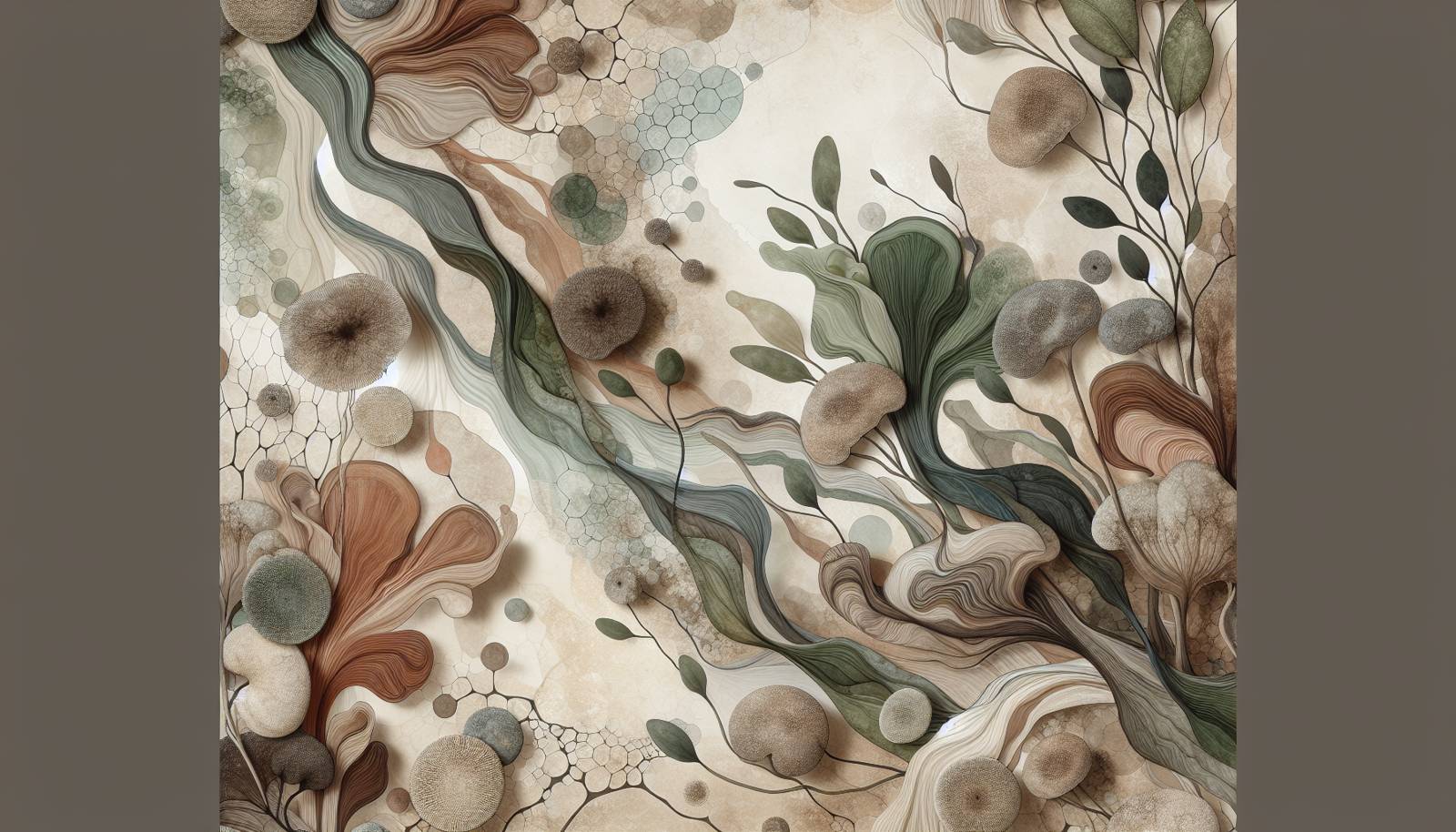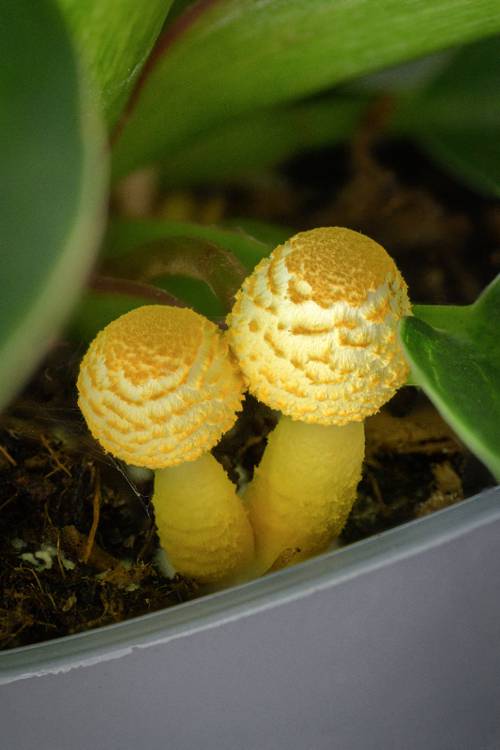
FAQ About Indoor Mushroom and Plant Co-Cultivation

What is indoor mushroom and plant co-cultivation?
Indoor mushroom and plant co-cultivation is the practice of growing mushrooms together with plants in an indoor environment, aiming to create a symbiotic relationship where both can thrive. This technique takes advantage of the complementary needs and outputs of mushrooms and plants to enhance growth conditions, reduce waste, and improve air quality.

What are the benefits of co-cultivating mushrooms and plants indoors?
Co-cultivating mushrooms and plants can offer numerous benefits, including better use of space, improved air quality, and natural pest control. Mushrooms, for instance, can help break down organic material into nutrients that are useful for plants. They also release carbon dioxide during their growth process, which plants use for photosynthesis. This symbiotic relationship can lead to healthier growth and reduced need for chemical fertilizers.

What types of mushrooms are suitable for indoor co-cultivation with plants?
Common mushrooms suitable for indoor co-cultivation include Oyster mushrooms (Pleurotus ostreatus), Shiitake (Lentinula edodes), and Lion’s Mane (Hericium erinaceus). These varieties are relatively easy to grow in controlled conditions and can coexist well with many houseplants.

What are the best houseplants to co-cultivate with mushrooms?
Houseplants that are known for their hardiness and adaptability, such as ferns, peace lilies, and pothos, are excellent for co-cultivation with mushrooms. These plants thrive in similar humidity and light conditions needed for mushroom cultivation, making them ideal companions in an indoor setup.

How do mushrooms and plants benefit each other when grown together?
Mushrooms and plants benefit each other by creating a more balanced microenvironment. Mushrooms help decompose organic material into simpler nutrients that plants can uptake more easily. Meanwhile, plants produce oxygen and consume carbon dioxide, which helps maintain an optimal atmosphere for mushroom growth.

What kind of growing setup is needed for indoor mushroom and plant co-cultivation?
For successful indoor mushroom and plant co-cultivation, a controlled environment with appropriate humidity, temperature, and light levels is necessary. Humidity levels should generally stay between 70-90% for mushrooms, while plants often prefer around 50-60%, so a compromise or zoned setup might be required. Additionally, you will need containers or bins that can hold growing substrates suitable for both mushrooms and plants.

Do mushrooms require different lighting than plants when co-cultivated indoors?
Yes, mushrooms typically require less light compared to plants. Most mushrooms grow optimally in low-light conditions, which are generally sufficient with indirect sunlight or under fluorescent lights. Therefore, managing lighting can involve ensuring that plants receive enough light while not over-illuminating the mushrooms.

How do I maintain proper humidity levels for both mushrooms and plants in co-cultivation?
Maintaining the right humidity levels involves regular monitoring and adjusting with the use of humidifiers or trays of water to increase moisture. Misting systems can also offer localized humidity, especially in the mushroom growing areas, without overly saturating areas occupied by plants. Proper ventilation is also key to prevent mold and disease in both fungi and plants.

Can I use the same substrate for both mushrooms and plants?
Yes, it's possible to use similar substrates for mushrooms and certain types of plants. For example, a compost or soil-based substrate that is rich in organic matter can support the growth of both mushrooms and plants. However, it's important to ensure that the substrate can retain moisture for mushroom growth while also providing aeration for plant roots.

What common challenges might I face in indoor mushroom and plant co-cultivation?
Common challenges include maintaining the right balance of humidity, preventing mold growth, ensuring adequate airflow, and managing pest infestations. Mushrooms can sometimes outcompete plants for nutrients, or the reverse might occur. Monitoring and adjusting growing conditions frequently is vital for a successful yield from both fungi and plants.

Is indoor co-cultivation of mushrooms and plants environmentally beneficial?
Yes, indoor co-cultivation can be environmentally beneficial as it maximizes space usage, reduces food miles by growing produce locally, and encourages sustainable practices by reusing waste organic materials as substrates. This method also promotes biodiversity by creating a more diverse micro-ecosystem in your home.

How should I arrange plants and mushrooms for optimal growth?
Arranging plants and mushrooms involves ensuring each has access to their required resources, such as light, space, and nutrients. Mushrooms can be placed in shaded or lower sunlight areas while plants occupy sunlit positions or shelves. It's important to notice airflow and allow room for each to expand without crowding.

Can herbs be co-cultivated with mushrooms indoors?
Yes, many herbs such as basil, mint, and oregano can be co-cultivated with mushrooms. These herbs typically require similar growing conditions to many indoor plants and can benefit from the nutrient-rich substrate provided in a co-cultivation setup.

Are there special containers or systems for growing mushrooms and plants together?
While standard pots and containers can work, specialized systems like hydroponic units or terrariums can offer better control over environmental conditions such as humidity and light. These systems often include features like integrated humidity controls, which are beneficial for growing both plants and mushrooms simultaneously.

What are the optimal temperature conditions for indoor mushroom and plant co-cultivation?
Optimal temperatures for co-cultivating mushrooms and plants indoors often range between 60-75°F (15-24°C). Some mushrooms and plants may have specific temperature preferences within this range, so it's important to consider the particular species you are cultivating and adjust accordingly.

How do you prevent mold in indoor co-cultivation setups?
Preventing mold involves ensuring good air circulation, managing humidity levels properly, and not overwatering. Using fans, making sure the substrate is well-drained, and applying natural fungicides can help control mold growth. Additionally, regularly inspecting your growing environment for mold and acting quickly if detected is crucial.

What kind of substrates can be used for mushroom growth in co-cultivation setups?
Common substrates for mushroom growth that are compatible with plant cultivation include straw, sawdust, coffee grounds, and compost. Each substrate offers different benefits, so choosing the right one will depend on the specific type of mushroom and plant being co-cultivated.

Can you use artificial lighting for both mushrooms and plant growth indoors?
Yes, artificial lighting such as LED grow lights or fluorescent lights can be used successfully for both mushrooms and plant growth. It's important to adjust the intensity and duration of the light to suit the needs of both organisms without causing adverse effects.

How does carbon dioxide exchange work in indoor mushroom and plant setups?
Mushrooms produce carbon dioxide as a byproduct of their metabolism, while plants require carbon dioxide for photosynthesis. This exchange can help balance the air quality within a co-cultivation setup, providing a natural synergy that benefits both fungi and plants.

Is it necessary to fertilize plants when co-cultivating with mushrooms?
While mushrooms can help enrich the soil with nutrients, some plants may still need additional fertilization depending on their nutrient requirements. It's important to monitor plant health and observe any signs of nutrient deficiencies, adjusting your fertilization practices as necessary to ensure balanced growth.
